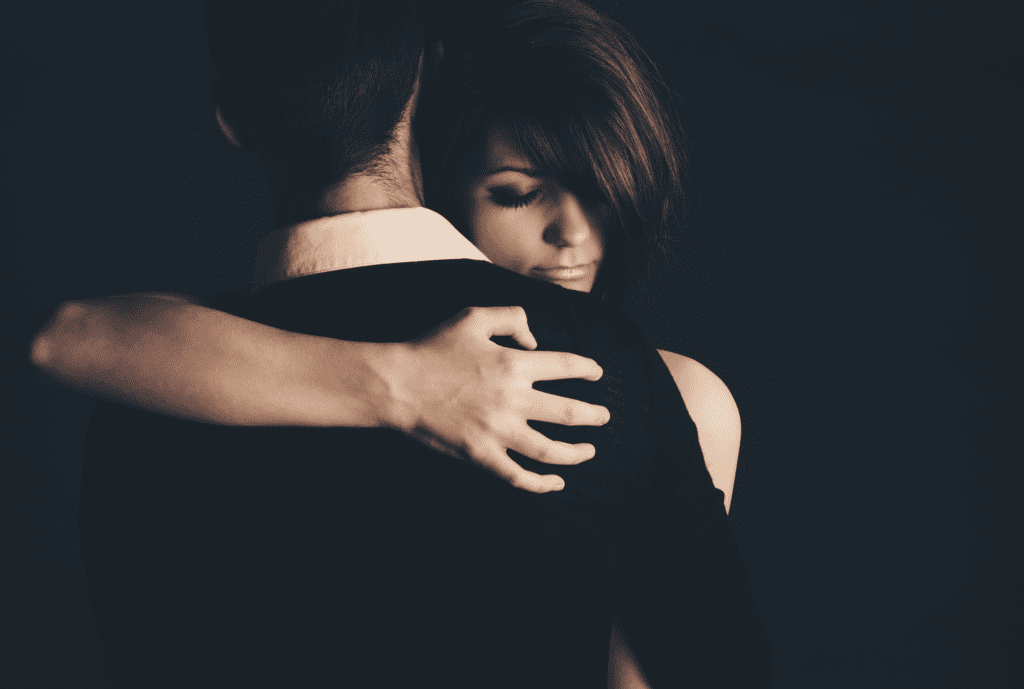
Being dependent on others is good. It makes us human. Voicing our needs from a place of compassion and self-worth brings us closer to others. However, too much dependence results in codependency. In codependent relationships, one partner carries the relationship emotionally, while the other avoids taking responsibility for their part in sustaining the connection. Learn about the other signs of this dysfunctional relationship type and the steps you can take to overcome codependent tendencies. (Estimated reading time: 11 minutes)
“Of all forms of caution, caution in love is perhaps the most fatal to true happiness.”
— Bertrand Russell
Compare relationships to a slow dance; each movement is made with careful thought, considering the needs of the dance partner. When a couple devotes themselves to this performance, the outcome is a solid and sublime connection based on trust, loyalty, and selfless care.
When the couple’s steps are out of sync, it causes disharmony. One person may step on the other’s toes or slip and fall during the dance. Their lack of coordination and not being in tune with each other’s rhythms causes disarray, and introduces a challenge to keep the dance going.
If you’ve ever been in a relationship, you’ll know that its health and longevity depend on this dance. You must meet your partner’s needs while also advocating your own. When this delicate balance is not maintained, it leads to codependent relationships, where one’s identity and happiness are contingent upon someone else.
Codependence isn’t strictly limited to romantic relationships. The dynamic can be seen in other partnerships like those between a parent and child, siblings, friends and coworkers. But the impact is much more profound in intimate connections because of the close nature of the relationship.
Unfortunately, codependent connections are glamorized in pop culture. In the 90s sitcom “Friends,” we see Rachel Green and Ross Gellar engage in a push-and-pull dynamic. This fuels the drama that unfolds between them throughout the series. The cult classic “Fifty Shades of Grey,” showcases a toxic, one-sided connection between Anastasia and Christian Grey, where Christian holds all the power.
The tension and drama between a couple entangled in a codependent relationship may be exciting to watch onscreen or read about in romance novels, but in real life, these relationships are toxic. To avoid getting caught in codependent relationships , it’s best to understand what they are and keep our codependent tendencies in check when in the throes of love.
What are codependent relationships?
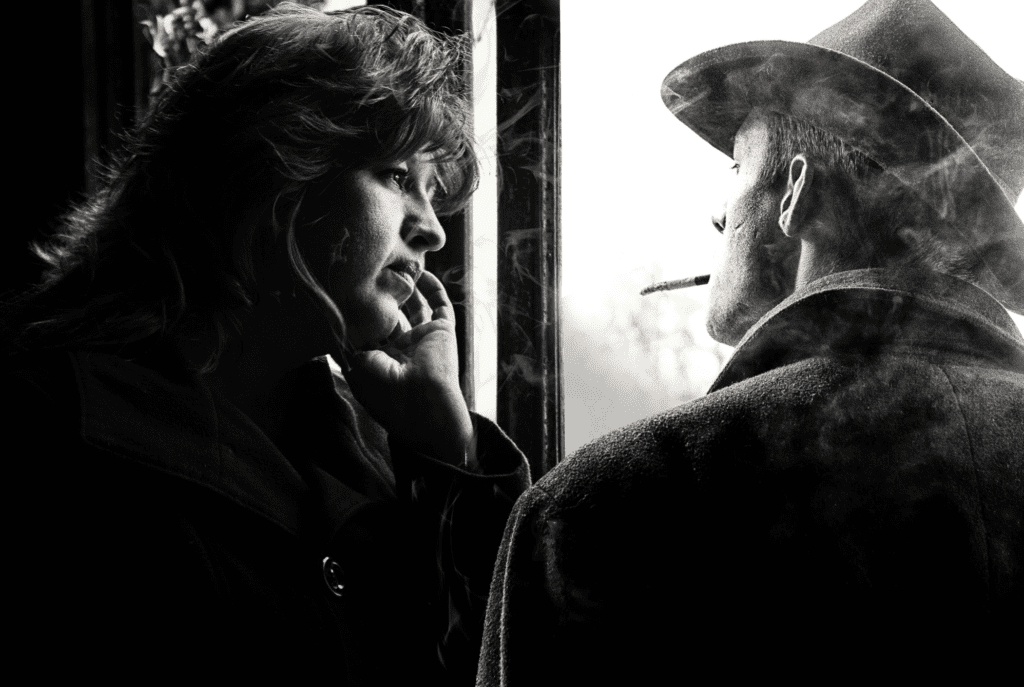
In codependent relationships, one partner does more emotional heavy-lifting in a relationship (the caretaker), while the other avoids taking responsibility for their part in sustaining the connection (the taker). The roles can change depending on the issue. For instance, one partner might be a caretaker emotionally but a taker financially.
“I completely lost myself in my relationship with them!”
You might have said this yourself or heard someone else express the above. This sentiment defines what a giver or caretaker feels after stepping out of a codependent connection. Givers become so focused on the other person that they lose their sense of self and no longer feel like their lives are their own.
Codependent relationships work until the caretaker is depleted from giving without receiving anything in return. They become resentful, hurt, and angry because they do not get the love and acknowledgement they seek. The taker never feels satisfied and begins to look elsewhere to satisfy their needs.
Codependency can manifest in various ways and looks different in every relationship. A big clue is if you feel like you’re doing all the work and compromising your values to deal with your partner’s toxic habits. It can be as mild as picking up their clothes off the floor or more severe like coping with their erratic debt-inducing spending habits.
People in codependent relationships stick around because of the time and effort they’ve invested in them and because leaving could lead to a loss of companionship and familiarity.
No amount of convincing will work on someone knee-deep in a codependent connection who operates under the illusion that they’re in love. They’ll find a way to rationalize their behavior because they’re essentially ‘hooked’ on the other person. They can’t see clearly, like an addiction.
The term “codependency” was coined in the 1950s by Alcoholics Anonymous to describe the partners of alcoholics who were hooked into the toxic lives of those they cared for. They were essentially addicted to addiction.
Codependency is not a clinical diagnosis, and it’s not categorized as a personality disorder. But it does overlap with other personality disorders like the dependent personality disorders that stem from the attachment styles we develop in childhood.
Why do people get into codependent relationships?
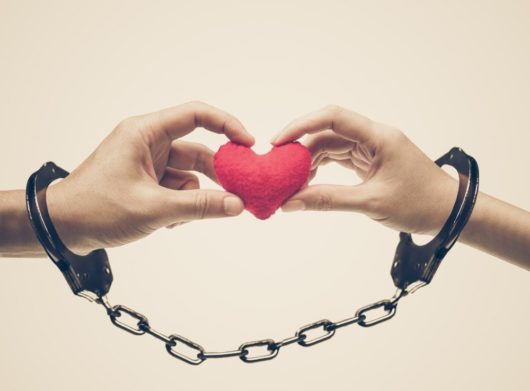
Being in a dysfunctional relationship sucks the life out of life. But we’re still convinced that the vampiric person we’re with is our only source of love. Those prone to codependent behavior feel they must acquire power from outside themselves through relationships, money, material objects, or a professional title.
In her book, “Anatomy of the Spirit,” intuitive healer, Caroline Myss, refers to this type of person as an “acquisitioner.” An acquisitioner has a deep-seated belief of “alone, I am nothing” rooted in their feelings of inadequacy. Losing their relationship would mean losing themselves.
Myss, who investigates this dynamic on the level of the human energy system, found that acquisitioners essentially connect their energetic circuits to their “power targets.”
When this happens, the person representing our power target draws power away from our energy fields and into themselves. We literally lose power to the person because our circuits are attached to their energy field.
So, where did this belief that we are powerless without another person come from?
According to research, codependency is a projection of past relationships with family members. Those inclined to enter into codependent relationships have had an unhealthy relationship with a parent or family member.
The problematic relationship can be due to one or a combination of the following:
- Emotional, physical, or sexual abuse
- A family member suffering from chronic mental or physical illness
- A family member’s addiction to alcohol, drugs, work, gambling, sex, or food
Since the problems in a family are not acknowledged and dealt with properly, the codependent person sacrifices their needs to take care of the needs of the impacted family member.
We also develop attachment styles based on how we relate to our parents.
An attachment style is a specific pattern of behavior in and around relationships. A codependent relationship usually has one person exhibiting an anxious attachment style, needing approval and displaying fears of abandonment. The other person has an avoidant attachment style where they dismiss the other person because they’re uncomfortable with true intimacy.
The core issue of a codependent person is a lack of healthy boundaries due to a poor self-concept. This can be from exposure to unhealthy family dynamics or how our brains are wired.
Research shows that if a person has a prefrontal cortex that fails to suppress empathic impulses, it could result in an overflow of empathy, making them vulnerable to codependency.
Can a codependent relationship work (and are they always bad)?
A healthy dependence on your partner is a good thing. It’s reasonable for those in a relationship to look to one another for support and expect an exchange of give and take.
Voicing our needs from a place of compassion and self-worth also brings us closer to others—however, too much results in codependency.
By definition, codependency is toxic and can spell disaster for a couple. But it’s important to recognize the difference to a healthy dependency on another person, which can be positive. Here’s how dependent and codependent relationships differ:
1. In dependent relationships, both partners make each other a priority but also have interests and friends outside the connection that make them happy. In codependent relationships, they have no interests, values, or identity outside the connection.
2. In dependent relationships, both rely on each other for love and support but can also sustain themselves with self-love and other relationships. In codependent relationships, both parties feel unworthy unless their partner needs them, or they can’t find fulfillment until their needs are met at the other person’s expense.
3. In a dependent connection, there is healthy communication; both people can express themselves and find ways to create a relationship that benefits them. In codependent relationships, one of the partners can’t express their needs – even if they do, they aren’t given importance by the other.
The ideal relationship is an equal, two-sided connection where both feel nourished and are comfortable giving and asking for what they want. Unlike a codependent couple, dependent partners who rely on each other feel stronger and become better in every way.
Signs you’re in a codependent relationship
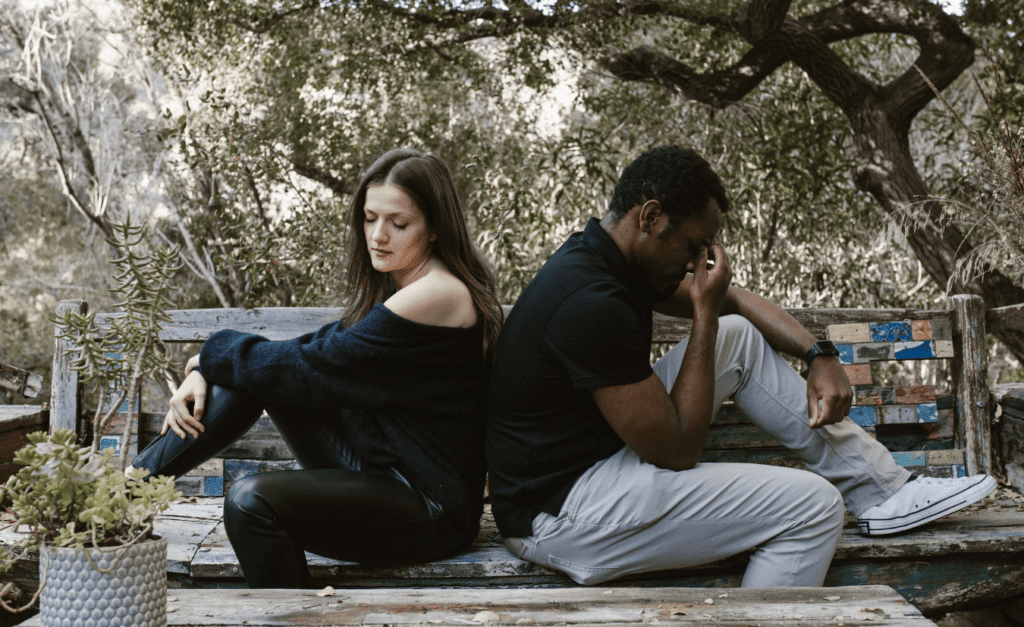
Codependency causes an imbalanced relationship pattern. In this lopsided connection, one person does all the heavy relationship lifting — sacrificing their own needs and feelings to meet those of the other. There is an inequity of power where the giver keeps on giving and receives little to nothing back in return for the sacrifices they make.
There are several signs of codependency. If you experience any of these symptoms in your relationship, you’re most likely the caretaker in a codependent connection.
1. Feeling the need to get your partner’s approval and permission. You may do everything you can to get the approval and attention of your partner, even if it does not feel right for you. You’re also uncomfortable about doing anything without their consent. You only feel good about yourself when they appreciate you.
2. Being around your partner stresses you. You feel more at ease when around other people. You have a sense of walking on eggshells around your partner because you’re concerned about them getting irritated by your words or actions.
3. Feeling like you have lost your identity and sense of self. To meet your partner’s needs, you abandon your own. Your feelings become so enmeshed with them that you don’t even know how you feel.
4. The relationship is rife with conflict and tension. You have frequent disagreements and fights. You hope things will change, but it never does. You often end up apologizing and feeling sorry for the other person even if you haven’t done anything wrong.
5. Feeling like you need to rescue the other person. No matter how addicted, troubled, and irresponsible they are, you believe only you can fix them. In this way, you enable their behavior rather than facilitating their growth and recovery.
6. Deep down, you feel unhappy and know you’re settling for breadcrumbs. You no longer have fun with your partner, and there’s no affection or attraction. You don’t feel like they have your back, and there’s a sense of stagnancy, like your life is going nowhere.
If you’re a taker in a codependent relationship, one of the tell-tale signs is a sense of entitlement. You expect your partner to do things for you and hold them responsible for your feelings and meeting your needs. If you’re not feeling good about the connection, you blame it on your partner’s actions instead of taking responsibility for how you think.
If you identify with these signs, know that you can shift this dynamic and move towards a healthier version of yourself.
How to break free from codependent relationships
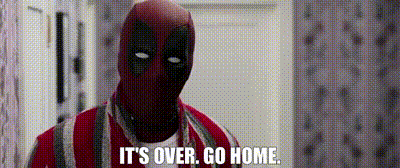
Some people are more prone to codependency than others. Certain patterns in behavior tend to be problematic and interfere with their sense of emotional fulfillment and their capacity to find satisfaction in relationships.
The first step to curing codependency is identifying these traits in yourself and getting the help you need to overcome them:
- Having an unhealthy need for approval and a fear of abandonment.
- Poor self-esteem and a lack of self-trust.
- Needing to be in a relationship to feel “complete.”
- Unable to communicate your needs and feelings to others.
- Feeling disconnected from your emotions.
- Overly dependent on other people, even at your own cost.
- Feeling an exaggerated sense of responsibility for other people’s needs and wellbeing.
- Difficulty making decisions for yourself.
The sooner you identify the symptoms of a codependent personality, the easier it will be to work through it. If you’re the codependent partner, here are some things you can do to work on yourself:
1. Create a life outside the codependent relationship
Prioritize “me-time” to focus on hobbies and activities you enjoy and that give you a sense of meaning. During your time away, turn your attention inward and remove your focus from others.
2. Reconnect with family and friends
Codependency can cause you to distance yourself from important relationships in your life. Get out of isolation and spend time with people you can care about and who support you.
3. Speak with a therapist
Therapy can give you a safe space to process your feelings and reflect on any past trauma. Mental health providers can offer the perspective you need to make better decisions in your life and identify your emotional needs.
4. Consider couples’ therapy
Consider couples therapy if you and your partner are willing to work to make your connection healthier and more balanced. Attending therapy sessions with a marriage counselor can reduce codependency.
5. Prioritize self-care
Make time for activities that meet your emotional, mental, physical, and spiritual needs. That may include having long warm baths, reading a book, or attending a play. Taking time out to replenish is a sign of self-love. When you prioritize your needs and speak to yourself with love, you show others that you value yourself and your needs.
6. Build boundaries and stand up for yourself
If someone undermines, criticizes, or tries to control you, speak up for yourself and be your own advocate. Don’t be afraid to say “no” when you don’t want to do something. Healthy self-assertiveness will ensure you’re not taken advantage of.
Even if one person decides to love themselves and act on their wellbeing, the relationship dynamic will shift for the better. If the enabler isn’t willing to cooperate and pull their weight, the caretaker should be brave enough to separate themselves from the connection.
Relationships are supposed to be a sanctuary where we replenish and do the same for the other person. What manifests is two happy and self-actualized individuals who support each other in their missions. The whole purpose of being in a relationship is to feel good so that you can do good. This simple truth will lead us to connections that bring out our best.
All my best on your journey,
Seline

Question for you: Have you ever been (or are you) in a codependent relationship? What did you learn about yourself from your experience, and what would you like to change moving forward?
Did you like this post? Sign up below, and I’ll send you more awesome posts like this every week.

Hello Seline,
Thanks for sharing this with us. I have avoided getting into any serious relationships because I have a bit of an addictive personality. I fear I would end up as one of these codependent people and I know I don’t want to be that kind of burden to another person. I hope that I can break this cycle some day.
Kris
Dont lose hope- half the battle is knowing what to look for and what warning signs to keep in check. We all can be addicted to things, but knowing that and going into something with that known weakness in check makes it easier to avoid those common pitfalls.